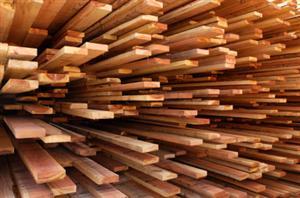| Complexity level: | 8 |
| Project cost ($): | 90 |
| Time required: | 1 day to prepare, 1 day for the science project experiment |
| Material availability: | Easily found |
| Safety concerns: | Be careful when removing the hot wooden blocks from the oven. Use gloves to protect your hands. |
Hypothesis
Wood of all types will expand when they absorb moisture and shrink when they lose moisture.
Overview
Expansion and shrinkage in woods
Trees are just like all other living organisms that consist mainly of water. When wood has just been cut, it will still have a very high level of moisture content and cannot be used as firewood or for woodworking. The wood has to be dried in either an open space or in an oven. Ideally, the wood should first attain the same humidity as its surrounding environment, before it becomes useful.
The expansion and contraction of wood is caused by the surrounding humidity than thermal factors. A higher humidity in the surrounding air will cause wood to expand whereas a lower humidity will cause the wood to shrink. The expansion of the wood will be greater along the growth rings of the wood and less pronounced or almost negligible along the length of the wood.
Scientific Terms
Materials
The materials required for the science fair project experiment: :
- 1 redwood block (50mm x 20mm x 100mm)
- 1 teak wood block (50mm x 20mm x 100mm)
- 1 black oak wood block (50mm x 20mm x 100mm)
- 1 red maple block (50mm x 20mm x 100mm)
- 1 caliper
- 1 oven
- 1 pair of gloves
- 1 black marker pen
Procedure
1. For this science fair project, the independent variable is the type of wood used – redwood, teak, black oak and red maple. The dependent variable is the change in dimension of the wood after being dried in the oven, and at normal room humidity. This is determined with the use of the caliper. The constants (control variables) are the size of the wooden blocks, the air humidity of the surroundings and the humidity inside the oven.
2. The science project experiment is started by cutting the 4 types of wood and ensuring that their dimensions are 50mm x 20mm x 100mm each. The 50mm side should be along the direction of the growth rings. Record the dimensions in the table below.
3. Using the marker pen, label the wooden blocks with the name of the type of wood.
4. Set the oven to a temperature of 120°C. The 4 wooden blocks are placed inside the oven for the next 24 hours. The heat from the oven will convert the moisture in the wooden blocks into vapor.
5. Use the gloves to handle the hot wooden blocks. The dry wood blocks are removed from the oven after 24 hours and their dimensions measured again using the caliper. All the measurements are recorded in the table below.
Results
It was observed that all 4 types of wood shrank the most along the growth rings (50mm). The black oak showed the biggest change in dimensions compared to the other 3 types of wood. Redwood showed the least change in dimensions.
| Wood | Along the growth ring (mm) | Along the Radial (mm) | Along the length (mm) | ||||||
| Normal | After dry | % change | Normal | After dry | % change | Normal | After dry | % change | |
| Redwood | 50.1 | 48.6 | 3.08% | 20.1 | 19.7 | 2.03% | 100.2 | 100.1 | 0.10% |
| Teak | 50.0 | 48.1 | 3.95% | 20.1 | 19.7 | 2.03% | 100.0 | 99.9 | 0.10% |
| Black oak | 50.1 | 46.4 | 7.97% | 20.0 | 19.4 | 3.09% | 100.1 | 99.9 | 0.20% |
| Red maple | 50.2 | 47.2 | 6.36% | 20.0 | 19.5 | 2.56% | 100.1 | 100.0 | 0.10% |
Conclusion
The hypothesis that wood expands along the growth rings when humidity is high and shrinks when humidity is low, is proven to be true.
Dried wood is much easier to work with compared to freshly cut green wood. The removal of moisture from the wood makes it lighter and easier to handle. Storage, handling and shipment costs are also cheaper because they are lighter. Dried wood also expands and shrinks less, and therefore is easier to be fastened securely using bolts or nails. It is also easier to cut with precision. As the wood dries, it strengthens.
Also consider
To improve the reliability and accuracy of our results, a larger number of wood samples should be used.
This science fair project may be repeated, this time, with other types of woods like Pine, Fir, Hemlock or Birch.
Modify the science project experiment, using different levels of humidity in a humidity chamber and comparing the rate of expansion for each type of wood.
References
Wood movement - http://www.woodworkerssource.com/wood_movement.php
Allowing for expansion and shrinking - http://woodworking.about.com/od/dealingwithproblems/p/expansion.htm

